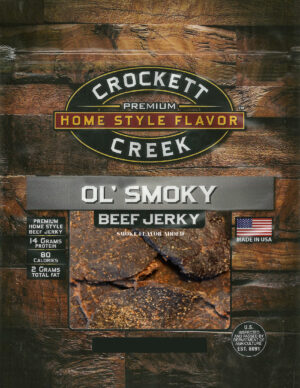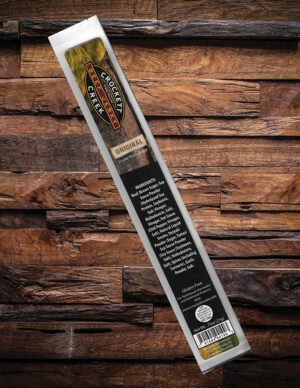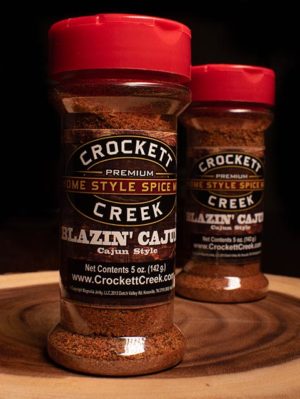It doesn’t get much more American than beef jerky, but what if we told you jerky wasn’t actually American at all? Most countries have their own version of jerky since the process of making it really boils down to drying and seasoning meat cut into thin strips. What’s fascinating, however, is the way each country goes about creating this beloved savory snack, and how they choose to consume it. Just look at the way these five different countries produce their own version of jerky and see if you can spot the similarities between ours and theirs. Warning: you may get cabin fever after reading.
Bak Kwa— China
Commonly prepared on Chinese New Year, Bak Kwa roughly translates to “pork chip” in its native language. This sweet and salty snack is traditionally prepared with meat from pigs or cows and is seasoned and marinated with five spice powder, fish sauce, soy sauce, sesame oil, ground pepper, salt, and sugar. Once prepared, it’s left to dry on a set of racks at 122-140 degrees Fahrenheit.
Since it’s cooked at a higher temperature, this jerky has a harder texture and darker color. However, more modern Bak Kwa recipes will roast their pork or beef on a lower temperature to get a softer texture and lighter color as more consumers opt for that kind of flavor profile. A lot of people also prefer to eat less sugary Bak Kwa, but that’s not the only variation on this traditional Chinese dish. In fact, so much of Bak Kwa’s beauty lies in the diversity of its flavor and textures.
As families from China began to migrate to Malaysia and Singapore, they brought this delicacy along with them and, before long, Malaysian cultures began to adapt the dish to their own culture. For instance, instead of air drying their meat, they smoked it over charcoal for a richer and more full-bodied taste. They also started making a chili Bak Kwa that has much a spicier flavor profile than the traditional Chinese dish. As you can see, so much of Bak Kwa’s beauty lies in the diversity of its flavor and textures which is what makes this jerky beloved by so many.
Kilishi— Nigeria
Kilishi is the dried form of another popular African dish known as Suya. It’s like a kebab of sorts, since it’s basically a grilled and marinated skewer of meat, and Kilishi is also prepared and marinated on a skewer; but the meat used in making Kilishi, typically sheep, beef, or goat, is also sliced into thin sheets and dried instead of grilled.
The meat is typically marinated in a type of Nigerian peanut-based sauce called Dobu and is also mixed with water, spices, salt, ground onion, honey, or date palms for a touch of sweetness. Once roasted, it is left to dry on a wire rack for several hours.
The flavor of this jerky is the perfect combination of sweet and spicy. Many Nigerians like to top off their Kilishi with more pepper and enjoy with a cold, refreshing drink. However, the most remarkable thing about Kilishi is its shelf life. This jerky can last up to almost six months with little to no change in flavor or texture. This snack was probably preferred by many of northern Africa’s early migrating tribes for this very reason as well. Much like how our own Native Americans also liked to keep their jerky with them on their long hunting trips.
Cecina— Spain
Cecina has a similar flavor and texture to Prosciutto but slightly drier. This traditional Spanish appetizer originates from the town of León, a historic city in Northern Spain, where this jerky is typically made from shaved meat of the hindlegs of cows. However, there has also been recorded uses of rabbit and horse meat in the early recipes for Cecina, as well.
The process of making Cecina is a simple one. Once the meat is shaved, it is then salted and dried by air, sun, or smoke for several days until the desired taste is achieved. Cecina is crispy, smoky, and slightly sweet in flavor. It is served with a drizzle of olive oil on top and can be found sitting next to a slice of Manchego cheese, some Manzanilla olives, and a tall glass of Rioja right before the pan of Paella hits the table.
Uppu kandam— India
Uppu Kandam is part of the authentic, non-vegetarian Indian cuisine that originates from the city of Tamil Nadu. In this southern city of India, sun-dried dishes such as Uppu Kandam are considered delicacies since they take an immense amount of time to prepare. Therefore, this jerky is usually served on special occasions like religious holidays and ceremonies.
Uppu Kandam is usually made with goat mutton that has been thinly sliced and rubbed down with salt, turmeric, pepper, and chili powder and is then left to dry out in the sun. Unlike many of the other jerkies that have already been mentioned, Uppu Kandam is not eaten alone as a snack or an appetizer. Instead, it’s seen as an ingredient that can be added to gravies and curries for an extra punch of salty and savory flavor—like putting a ham hock in your broth or soup stock. But one thing this jerky does have in common with the others is its long shelf life. Much like the Nigerian Kilishi, Uppa Kandamhas a shelf life of nearly half a year. Imagine all the dishes you could make with that one ingredient!
Coppiette— Italy
Coppiette is a variety of a hard salami whose name means “little couples” in Italian. This jerky originated in a town on the knee of the boot-shaped country of Italy called Lazio. While this cured meat is typically enjoyed as an appetizer with other variations of salami and a glass of crisp, white prosecco, Coppiette has a rather humble origin story. This dish was originally only eaten by poor farmers as a way of making full use of their livestock.
Today, Coppiette is made with pork, but traditionally butchers made this jerky with the hind limbs of sheep, goat, donkeys, or horses. Preparing this Coppiette starts the way any good jerky starts—with strong seasoning. Usually, fennel seeds and a spicy Italian pepper called Pepperoncino are used to prepare the meat. Once seasoned, the meat is cured and then cut into long, thin strips and then taken to dry in pairs—hence the name “little couples.” The flavor is chewy and savory with an aromatic touch. Think if salami and beef jerky were melded into one, delicious entity.
Explore Crockett Creek’s World of Beef Jerky Flavors
If classic American gourmet beef jerky is more your speed, check out Crockett Creek Beef Jerky instead of booking your next flight to Spain or Italy. Here, you will find a wide variety of beef, elk, venison, and bison jerky all prepared with our homestyle seasonings and marinades—from classics like our Ol’ Smoky to exciting new flavors like Bayou Broil. Crockett Creek Beef jerky is always handmade, always gluten-free, and always crafted with quality in mind first. Visit our website to buy a pack of your favorite flavor of beef jerky today.





